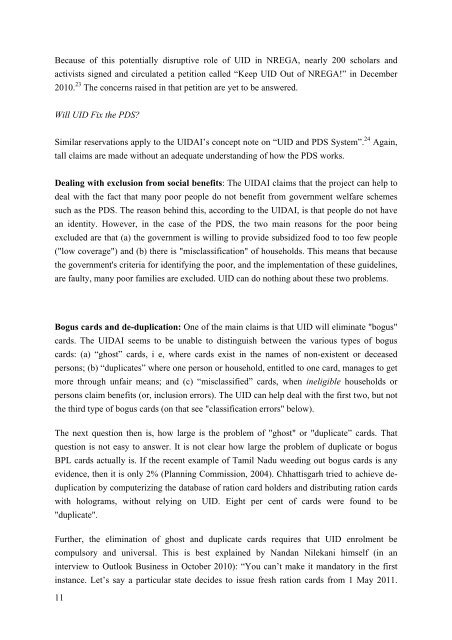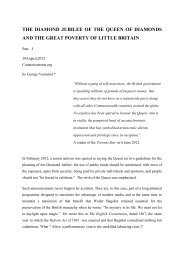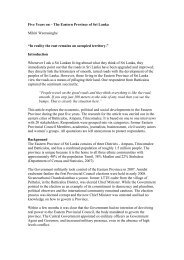UID For Dummies (PDF) - Countercurrents.org
UID For Dummies (PDF) - Countercurrents.org
UID For Dummies (PDF) - Countercurrents.org
Create successful ePaper yourself
Turn your PDF publications into a flip-book with our unique Google optimized e-Paper software.
Because of this potentially disruptive role of <strong>UID</strong> in NREGA, nearly 200 scholars and<br />
activists signed and circulated a petition called “Keep <strong>UID</strong> Out of NREGA!” in December<br />
2010. 23 The concerns raised in that petition are yet to be answered.<br />
Will <strong>UID</strong> Fix the PDS?<br />
Similar reservations apply to the <strong>UID</strong>AI’s concept note on “<strong>UID</strong> and PDS System”. 24 Again,<br />
tall claims are made without an adequate understanding of how the PDS works.<br />
Dealing with exclusion from social benefits: The <strong>UID</strong>AI claims that the project can help to<br />
deal with the fact that many poor people do not benefit from government welfare schemes<br />
such as the PDS. The reason behind this, according to the <strong>UID</strong>AI, is that people do not have<br />
an identity. However, in the case of the PDS, the two main reasons for the poor being<br />
excluded are that (a) the government is willing to provide subsidized food to too few people<br />
("low coverage") and (b) there is "misclassification" of households. This means that because<br />
the government's criteria for identifying the poor, and the implementation of these guidelines,<br />
are faulty, many poor families are excluded. <strong>UID</strong> can do nothing about these two problems.<br />
Bogus cards and de-duplication: One of the main claims is that <strong>UID</strong> will eliminate "bogus"<br />
cards. The <strong>UID</strong>AI seems to be unable to distinguish between the various types of bogus<br />
cards: (a) “ghost” cards, i e, where cards exist in the names of non-existent or deceased<br />
persons; (b) “duplicates” where one person or household, entitled to one card, manages to get<br />
more through unfair means; and (c) “misclassified” cards, when ineligible households or<br />
persons claim benefits (or, inclusion errors). The <strong>UID</strong> can help deal with the first two, but not<br />
the third type of bogus cards (on that see "classification errors" below).<br />
The next question then is, how large is the problem of "ghost" or "duplicate” cards. That<br />
question is not easy to answer. It is not clear how large the problem of duplicate or bogus<br />
BPL cards actually is. If the recent example of Tamil Nadu weeding out bogus cards is any<br />
evidence, then it is only 2% (Planning Commission, 2004). Chhattisgarh tried to achieve deduplication<br />
by computerizing the database of ration card holders and distributing ration cards<br />
with holograms, without relying on <strong>UID</strong>. Eight per cent of cards were found to be<br />
"duplicate".<br />
Further, the elimination of ghost and duplicate cards requires that <strong>UID</strong> enrolment be<br />
compulsory and universal. This is best explained by Nandan Nilekani himself (in an<br />
interview to Outlook Business in October 2010): “You can’t make it mandatory in the first<br />
instance. Let’s say a particular state decides to issue fresh ration cards from 1 May 2011.<br />
11










